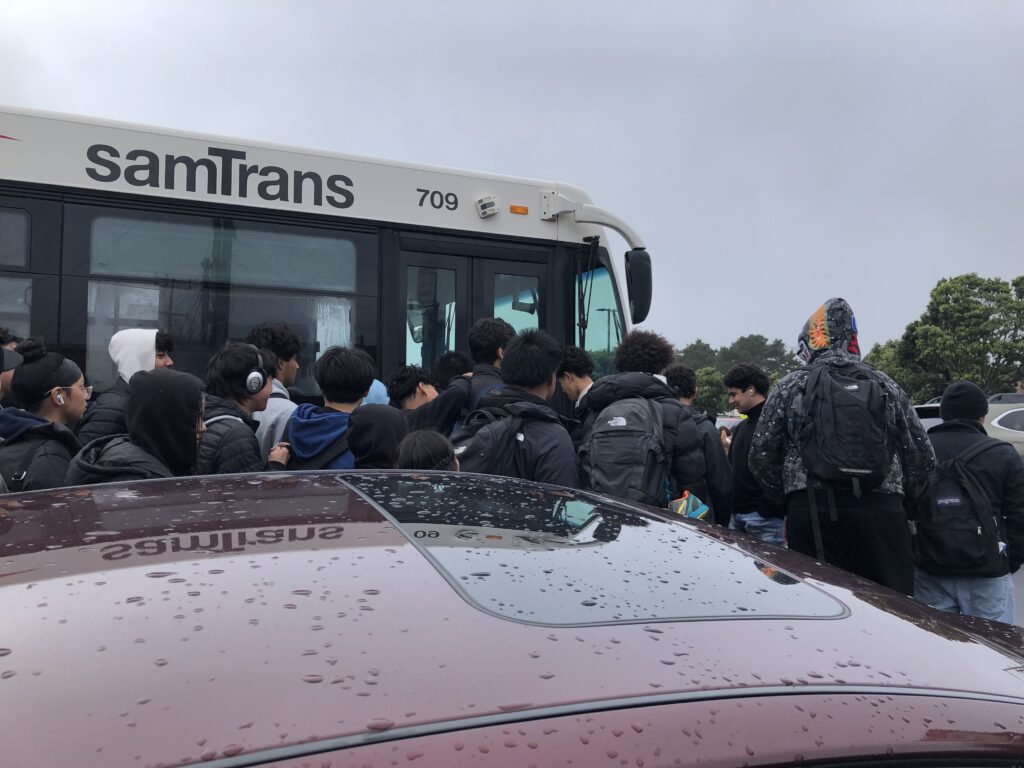Elon Musk has done it again! He has found another way to make sustainability repulsive with the Tesla cybertruck. Despite concerns with the vehicle, it somehow appeals to consumers through the vehicle’s stainless-steel exoskeleton and durability enabling it to drive anywhere. However, that’s not just because of its high end technology, but because of our conventional thinking of it significantly mitigating climate change.

Society’s shift in the use of individual electric vehicles like Tesla shows us that people have got the memo – climate change is real, and it is happening now. Electric vehicles are seen as zero-emission vehicles that can contribute to lowering our greenhouse gasses. If you have the money to afford a starting lease for a Tesla, like the cybertruck whose lease starts at $899, then congratulations! The people thank you for using your money to take up individual actions and live sustainably, but switching to electric vehicles as a solution is unfortunately, exclusive to the wealthy.
In the Bay Area, about 8.85% of the population were identified to be of poverty status in 2023 by a census reported. With the ongoing housing crisis that makes rent more expensive, and also simultaneously causing the population loss in California, purchasing an electric vehicle is not on the top of the common peoples’ priority list. The money that they make from the $16-$18 minimum wage in the Bay Area is better spent on rent, food, and other resources increasing in prices. As expensive as they are, its supposed zero-emissions are also questionable. Lithium and Cobalt are both essential to the production of Electric Vehicles. Despite its use in EVs, producing a less amount of CO2 emissions compared to the fossil fuel industry, its environmental impacts cannot be ignored. Larger EVs require larger batteries made with Lithium, and a majority of these metals from their batteries are known to be damaging even in the small quantities that they are disposed of. According to the leading environmental news website Earth.org, “Since a large majority of them are disposed of in landfills, leaks of environmental contaminants are quite frequent. Often, these leaks lead to underground fires, which release even more pollutants into the atmosphere.”
Furthermore, big corporations who profit off “sustainable” ways are, to sugarcoat it, not great people. Tesla, who states that they are “[designing] sustainable systems that are massively scalable—resulting in the greatest environmental benefit possible,” is the same company run by a CEO who supported the election of Donald Trump into presidency. Since being elected, he has signed an executive order entitled “putting America first in International Environmental Agreements” which included the country’s withdrawal from the Paris Climate Accord that aimed “to limit the temperature increase to 1.5°C above pre-industrial levels,” which is the complete opposite of a great environmental benefit.
Now don’t get me wrong – renewable energy is undeniably beneficial in both mitigating and adapting to climate change; but green capitalism, or the idea that capitalism and profit can go hand-in-hand with environmental action and justice, creates false climate solutions. Because we are greenwashed to think that switching to EVs will be the solution, we neglect the true solution to the climate crisis that accommodates the people regardless of class status, which is public transportation.

Students from Daly City expressed concerns about SamTrans, the public transportation agency that runs in the San Mateo County. In an interview with Jerard Del Mar, a senior at Westmoor High School who is also a public transit user, he expressed his experiences taking the bus when going to school, the local library, or hanging out with friends after class. “Buses run late all the time. It is just a little inconvenient, especially when, for example, I miss the bus when I’m trying to go to work and then I take the next bus but then that bus comes five minutes late.” As a high schooler as well, Del Mar notices the cleanliness of the buses, commenting that “I remember last week, I took the bus and it smelled like farts, and then one of my friends pointed that there was poop on one of the seats.”
Our public transportation system is asleep. As such, it leaves our buses – that are meant to serve the low-income, BIPOC, migrant, disabled, youth and students, and elderly communities – overly crowded, dirty, and unsafe.
This brings us to society’s greatest mind boggling question today – how exactly do we reawaken California’s mass transit system? The answer to that question lies within collective action.
In an interview with Montze, a former program coordinator at the Youth Leadership Institute – a California state-wide organization aimed to empower youth voices, they mentioned the work that they had done in the Transportation Equity Allied Movement Coalition or TEAMc. Originally founded to work hand-in-hand with SamTrans in regards to their price hikes, the coalition had worked to attend public SamTrans meetings to prevent its budget cuts that severely affected the youth in San Mateo County. Since then, the coalition had formed innovative ways to learn about the issues public transit users had. In multiple grants that the coalition had at the time, their proposal for a particular grant was to “investigate what’s going on in San Mateo County in regards to public transportation.” What ultimately came from this is Montze’s question of “what is our goal? Is it to move people or is it to move cars?”
We don’t have to reinvent the wheel, but we do have to continuously yet steadily peddle the gas. Instead of following the footsteps of the wealthy, we can instead, learn from the actions that TEAMc took to live a collective and sustainable life, especially for the people in the frontlines of the climate justice movement.
